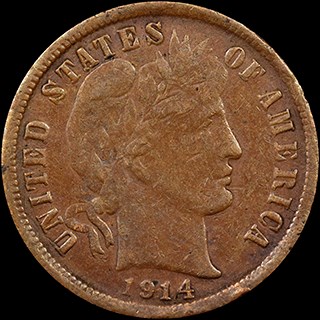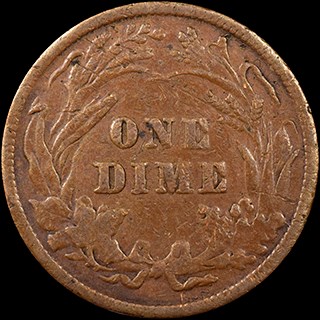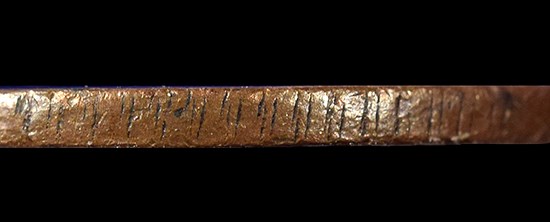Counterfeit Detection: 1914 Barber Dime
Posted on 7/9/2019
NGC graders recently noticed a very peculiar 1914 Barber Dime. This issue is not at all rare, with a recorded mintage of over 17 million coins. However, this one appears to be struck on a copper planchet.
So is it a rare pattern or an off-metal strike? Unfortunately for the submitter, it is in fact a poor-quality counterfeit. However, the story behind this coin is more interesting than meets the eye.
 |
 |
| Counterfeit 1914 Barber Dime Click images to enlarge. |
|
Take a look at the photos above. Note the extreme flatness of the head in comparison to the lettering of the legend. This flatness comes from a combination of detail loss during a transfer process to create a die along with weak pressure during striking. The weakness is also clearly visible on the reverse of the coin throughout the wreath.
So why would anyone go through the trouble of faking such a common coin? Even if they were going to try to pass it off for silver value, the piece is quite obviously copper, so their ruse would instantly be spotted. The answer to this question likely lies in the edge.
 |
| Edge of counterfeit Click image to enlarge. |
As you can see from the photo above, someone has painstakingly attempted to add reeding to this coin in order to give it a more authentic look and feel. Clearly, there is no value in someone attempting to do this today. It is more than likely that this coin is actually a contemporary counterfeit – that is, a coin meant to be passed off as authentic in commerce rather than to a collector. Perhaps it was created during a time of struggle such as the Great Depression, when work was hard to come by and many skilled workers had nothing but time on their hands.
The thin layer of silver that likely once adorned this piece has all but worn off, leaving the copper interior exposed and instantly proving this coin a fraud. If one had any doubts about the authenticity of this piece, a scale and an X-Ray Fluorescence tester prove beyond a shadow of a doubt that this coin is fake. It weighs only 2.2 grams versus a normal 2.5 grams and registers as pure copper, as opposed to 90% silver.
The coin featured here was not meant to deceive a collector. However, it is always important to remain vigilant, as counterfeiters have been starting to forge coins of lesser value. As always, a coin graded and encapsulated by NGC is guaranteed to be authentic.
Did you know? NGC has created a comprehensive Counterfeit Detection resource to help collectors and dealers identify counterfeit and altered coins. Visit NGCcoin.com/counterfeit.
Stay Informed
Want news like this delivered to your inbox once a month? Subscribe to the free NGC eNewsletter today!
